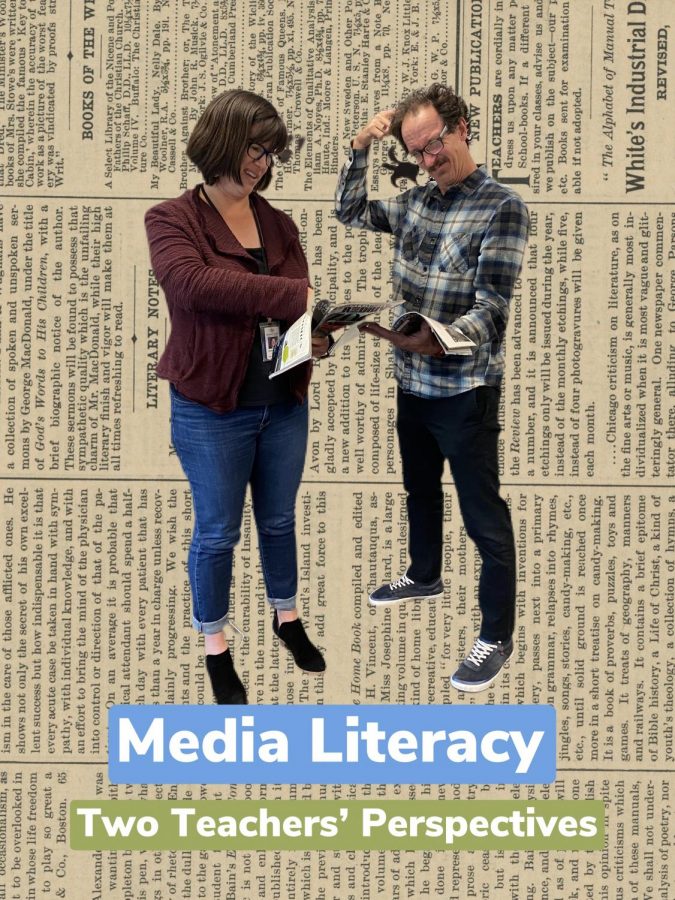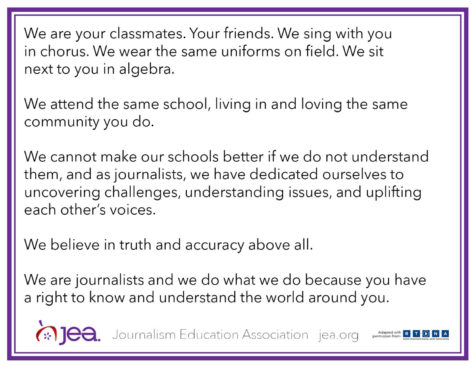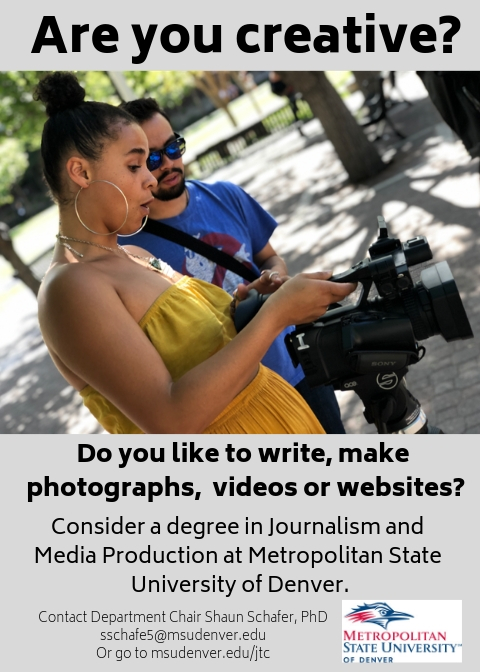A Teacher’s Approach to False Information
Two BHS language arts teachers reveal their perspectives on misinformation inside and outside the classroom.
April 22, 2021
*This is the second piece in a three-part series about Media and False Information. Check out the first installment, an infographic explaining details of news and misinformation, here.
In an age when information is instantly accessible via the internet and social media, it can be challenging to root out facts from fiction.
Mr. Armbrustmacher and Ms. Binion, two language arts teachers at Broomfield High School, teach about misinformation in their classes and offer advice to students that is applicable to school projects, as well as real-life research.
A primary focus of Ms. Binion’s AP Language Arts and Composition course is exploring and strengthening rhetoric. A major part of doing so revolves around the credibility of the author or speaker.
A significant portion of discovering an author’s credibility, or Ethos, is navigating to the About the Author section of a website and “finding out a little bit more information about [an author’s] credentials,” Ms. Binion said. Not only is this process useful for detecting misinformation for school, it’s also a tool students can use in their own lives.
Another strategy in determining whether a source is reputable, is “look[ing] at the pictures that they use,” so you can determine if “the picture is being taken from something out of context,” Mr. Armbrustmacher said.
In addition, Ms. Binion said, students—and anyone searching for the most truthful, unbiased piece of information—can ask themselves: “Can you find the same thing across not only multiple websites or sources, but can you also find that same information across sources that have potentially different political leanings?” If that’s possible, then “the likelihood of it being accurate increases.”
What happens if someone does run into false information, as will be inevitable in their search for news?
Ms. Binion said that one can use the false information to understand other people’s perspectives. Then, when they’re “able to find valid resources that support the true information, it’s a way to kind of increase dialogue with people who might not have understood.” Instead of directly attacking those who believe that misinformation, which she said may ultimately lead to a larger divide between two sides of an argument, it can be beneficial to have “logical discussions.”
In situations where these discussions aren’t possible, though, “A student’s obligation is to not use that misinformation and not spread that misinformation.”
So, how are these strategies for identifying and handling misinformation applied in students’ lives, and are they emphasized enough?
Mr. Armbrustmacher said that students must find accurate sources of information for their research projects, which is the main way they are exposed to rooting out false information in his class. However, he said that he hasn’t had as much time to focus on teaching about misinformation this year: “I haven’t done it yet this year just because our semesters have been so short; we haven’t really had an opportunity [to teach about misinformation].”
He said that learning about misinformation is still a super important experience for students, though, not just in language arts, but also in subjects like science and social studies.
Similarly, Ms. Binion said, “We need to teach students how to do that deep dive across all curriculums because it also comes down to the most basic, fundamental skill that I think we have an obligation to teach [students], which is critical thinking.”
Ms. Binion and Mr. Armbrustmacher both said that the importance of applying these critical thinking skills is especially great now that many BHS students are becoming close to voting age.
When people are in high school “it’s such a good time to develop good habits about being informed,” Mr. Armbrustmacher said.
Ms. Binion said, “I’m hoping that [students are] making informed decisions and that they’re really becoming consumers of information in a way that is beneficial to them, and beneficial to our country and our health and well-being.”
TLDR? Here’s a helpful checklist in determining whether you’re getting truthful information:
- Determine what an author/speaker’s credentials are.
- Check out the pictures on the site, and make sure they weren’t taken out of context.
- Notice if the story is an opinion piece or a news piece.
- See if you can find the same information on more than one source.






